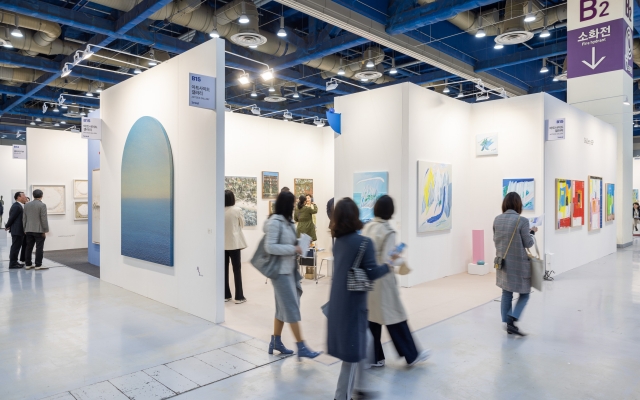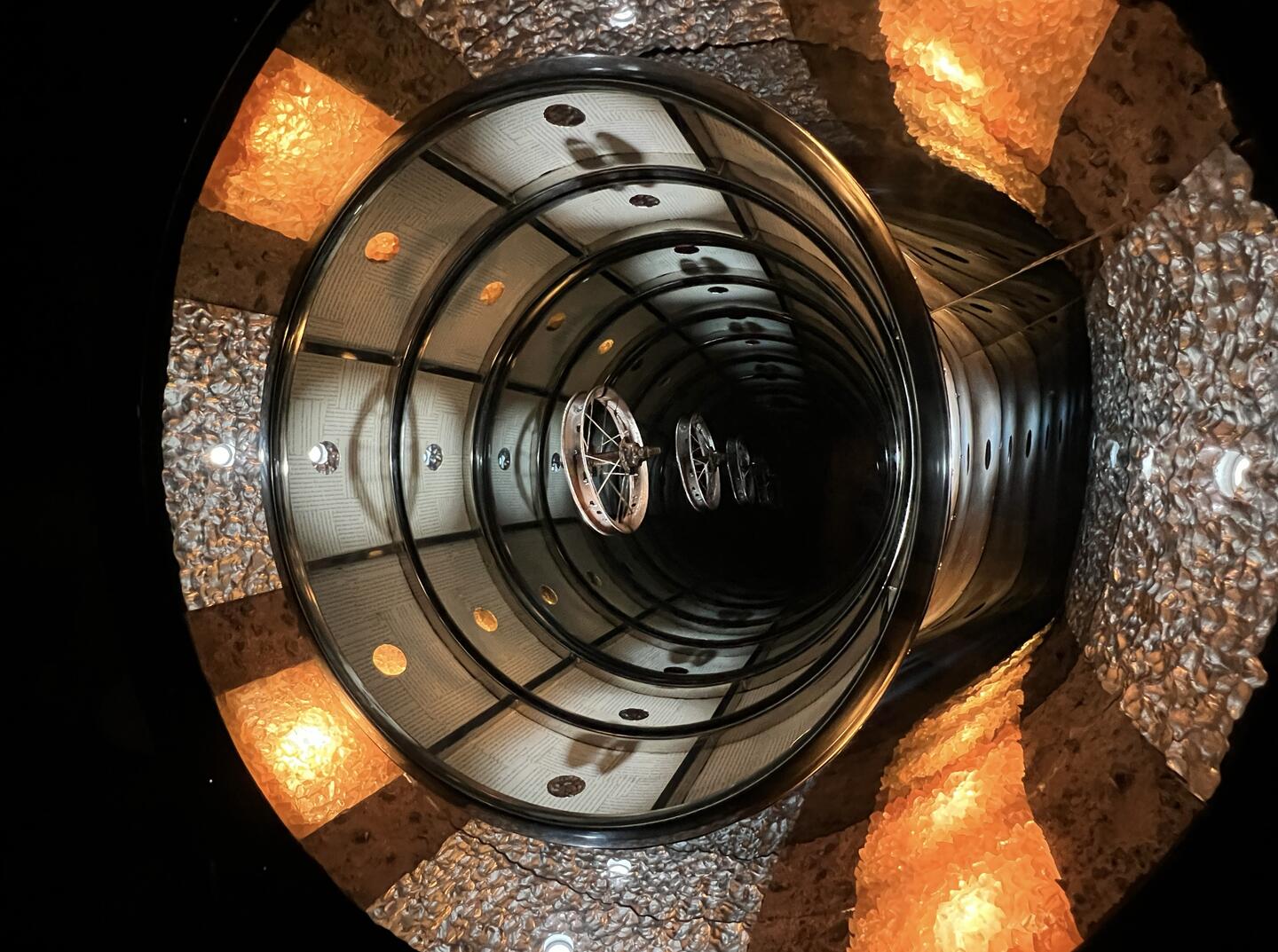This year’s Galleries Art Fair, which ran from April 13 to April 16, attracted more than 58,000 visitors, the largest attendance ever. The fair targeted younger collectors, featuring more trendy works by emerging artists.

Galleries Art Fair 2023. Courtesy of the Galleries Association of Korea.
With economic growth and the globalization of the art market, the number of art fairs has increased, especially since the late 1960s. This flow can also be seen in South Korea.
Korea’s first art fair appeared in the 1980s when South Korea was also experiencing significant economic growth. And since then, the local industry has seen remarkable growth over the past decade.
According to the Korea Arts Management Service (KAMS), a government agency, the number of Korean art fairs increased from just 21 in 2008 to 53 in 2018 and reached a peak of 65 in 2021.
Organized by the Galleries Association of Korea, Galleries Art Fair is the oldest art fair in Korea. Formerly entitled the Galleries Association Exhibition (한국화랑협회전), which was held in 1979, it was renamed and restructured as an art fair in 1986, when it first used the title Seoul Art Fair. It was not until the sixth edition in 1987 that it was changed to its current name, Galleries Art Fair.
This year’s Galleries Art Fair took place from April 13 to 16. In its 41st year, the fair aimed to be the largest ever, with more than 10,000 works by 900 artists in 156 galleries. The exhibition space was expanded to two halls at COEX in Gangnam-gu, Seoul, to provide a comfortable environment with larger booths than in previous years.
This year’s edition attracted more than 58,000 visitors over its five days, including 4,500 on the first day. This was the largest attendance ever, with over 5,000 more visitors than the previous year. However, it has been assumed that the sales amount did not reach the record-breaking performance of the previous two years because the association didn’t release sales results for this year.
In 2021, the fair reported record sales of 7.2 billion Korean won, and in 2022 the following year, it more than doubled that amount to 17.7 billion Korean won.

Galleries Art Fair 2023. Courtesy of the Galleries Association of Korea.
As in the previous year, the Galleries Art Fair targeted younger collectors, featuring more trendy works by younger artists to differentiate itself from Kiaf SEOUL, which is also organized by the Galleries Association of Korea but focuses on featuring artworks by big-name artists.
Many of the participating galleries showcased emerging artists born in the 1980s and 1990s. And a majority of the works sold during the fair were animation-like pop art, which is popular among millennials and Generation Z. Artworks by younger mid-career artists born in the 1970s, such as HaTaeIm, Lee Young-Ji, Sangwoo Koh and Kwon Ki Soo, were also reported to have had good sales results.
Just as last year, this year’s edition featured a variety of works, including mid-range and low-priced works, which drew positive responses that the fair was trying to expand its audience. “Galleries that participated in the fair reported that, unlike previous years, there were many first-time collectors,” said the Galleries Association of Korea.
Despite its positive reports, several problems are mentioned every year about the Galleries Art Fair. Since the participating galleries consist of members of the Galleries Association of Korea, it has been criticized that the quality of the artwork is not up to expectations due to the lack of diversity in participating galleries and the relatively easy conditions of participation. It has also been pointed out that the fair’s participants are mostly concentrated in the metropolitan area, and the artwork on display is overly skewed toward works that sell quickly.
This year also had some disappointing responses. This was the association’s first art fair since the inaugural Frieze Seoul held last September. Yet, the fair has not shown much change in its strategy from last year other than expanding the booth spaces.

Galleries Art Fair 2023. Courtesy of the Galleries Association of Korea.
Experts have pointed out the fair’s lack of long-term planning every year. The fair showed fewer Dansaekhwa paintings that sell well in the art market but have been excessively introduced every year. But the fair was still criticized for pursuing popularity rather than the artistic quality of the presented artworks. In other words, the fair aimed to minimize losses rather than improve the quality of the artwork.
This short-term solution to the fair’s problems will have to change. With the international art scene making inroads into Korea and introducing internationally important artists to the country, the public’s interest in art has been growing, and it is expected that the public’s discernment in art will increase. So rather than chasing immediate sales, showcasing important work will be more significant in the long run.
Along with the works that sell well in the art market, it is necessary for the fair to select and promote works by Korean artists that can leave a mark on art history. To create a virtuous cycle in the art market, it is more important to have artworks that can be traded in the art market for a long time and can play an active role on the international stage rather than making one-off sales. This also means that Korean art fairs should be more concerned with which works are sold and to whom rather than how many works are sold.





















